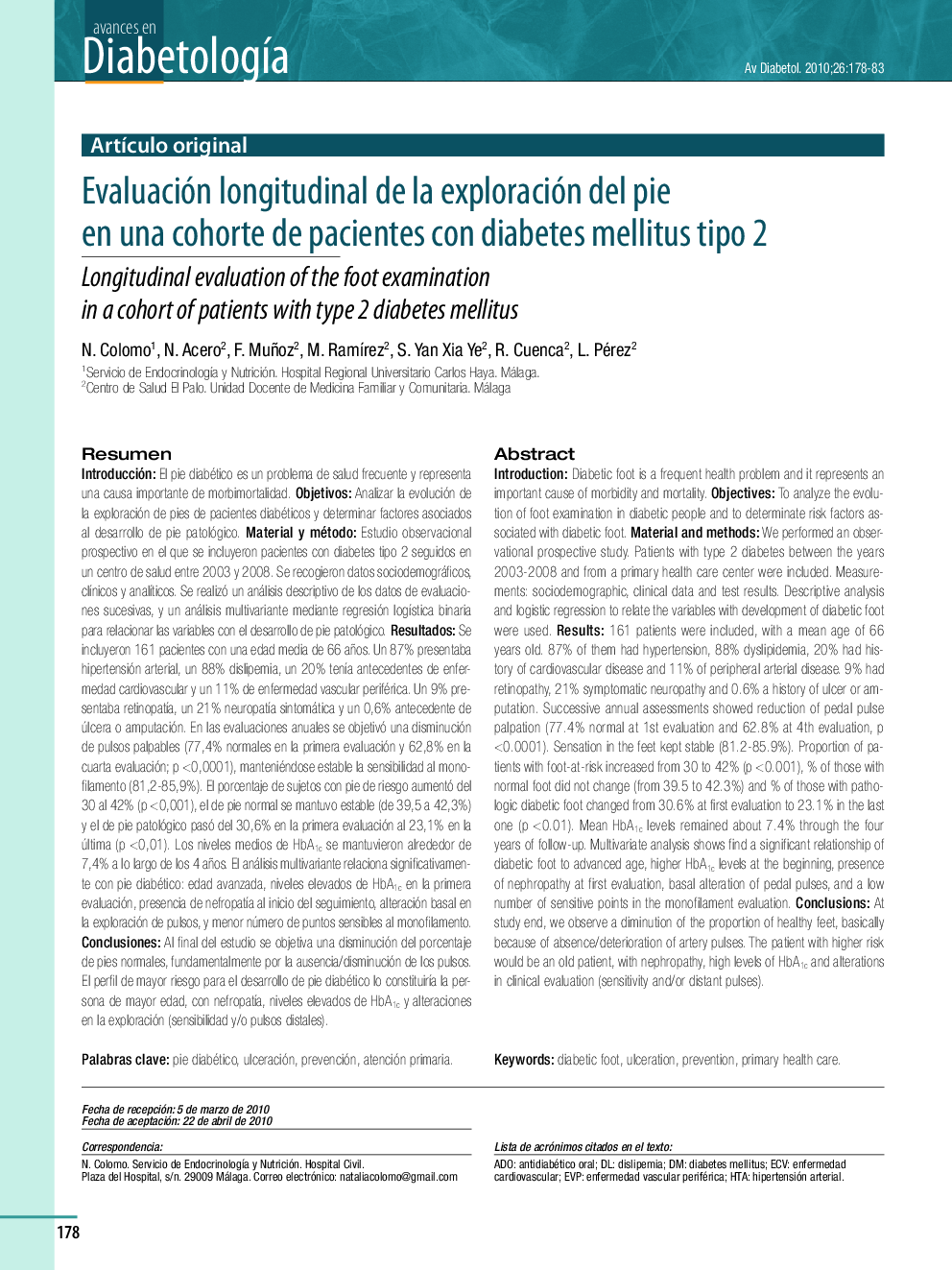| Article ID | Journal | Published Year | Pages | File Type |
|---|---|---|---|---|
| 3253938 | Avances en Diabetología | 2010 | 6 Pages |
Abstract
Introduction: Diabetic foot is a frequent health problem and it represents an important cause of morbidity and mortality. Objectives: To analyze the evolution of foot examination in diabetic people and to determinate risk factors associated with diabetic foot. Material and methods: We performed an observational prospective study. Patients with type 2 diabetes between the years 2003-2008 and from a primary health care center were included. Measurements: sociodemographic, clinical data and test results. Descriptive analysis and logistic regression to relate the variables with development of diabetic foot were used. Results: 161 patients were included, with a mean age of 66 years old. 87% of them had hypertension, 88% dyslipidemia, 20% had history of cardiovascular disease and 11% of peripheral arterial disease. 9% had retinopathy, 21% symptomatic neuropathy and 0.6% a history of ulcer or amputation. Successive annual assessments showed reduction of pedal pulse palpation (77.4% normal at 1st evaluation and 62.8% at 4th evaluation, p <Â 0.0001). Sensation in the feet kept stable (81.2-85,9%). Proportion of patients with foot-at-risk increased from 30 to 42% (p <Â 0.001), % of those with normal foot did not change (from 39.5 to 42.3%) and % of those with pathologic diabetic foot changed from 30.6% at first evaluation to 23.1% in the last one (p <Â 0.01), Mean HbA1c levels remained about 7.4% through the four years of follow-up. Multivariate analysis shows find a significant relationship of diabetic foot to advanced age, higher HbA1c levels at the beginning, presence of nephropathy at first evaluation, basal alteration of pedal pulses, and a low number of sensitive points in the monofilament evaluation. Conclusions: At study end, we observe a diminution of the proportion of healthy feet, basically because of absence/deterioration of artery pulses. The patient with higher risk would be an old patient, with nephropathy, high levels of HbA1c and alterations in clinical evaluation (sensitivity and/or distant pulses).
Keywords
Related Topics
Health Sciences
Medicine and Dentistry
Endocrinology, Diabetes and Metabolism
Authors
N. Colomo, N. Acero, F. Muñoz, M. RamÃrez, S. Yan Xia Ye, R. Cuenca, L. Pérez,
